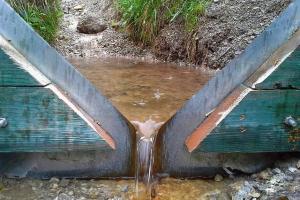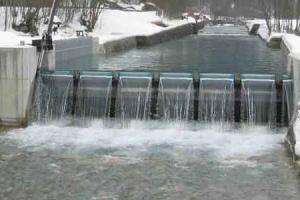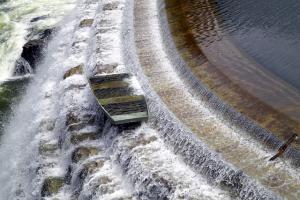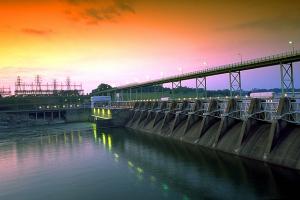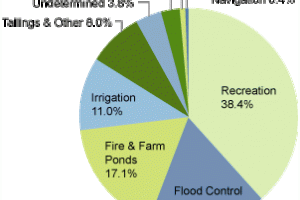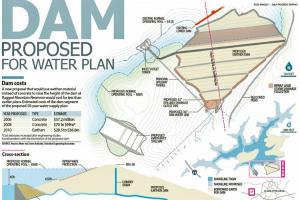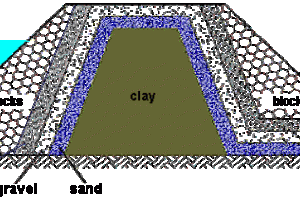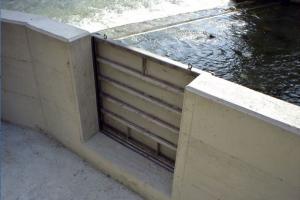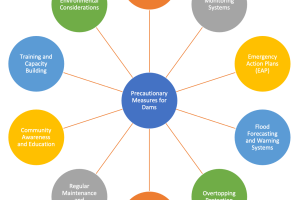Sand and Gravel Foundation Design for Dams
For the design of earth fill dams, presented the flow of seepage through the foundation and abutments be controlled so that no internal erosion occurs and there is no sloughing in the area where the seepage emerges.
This criterion also requires that the amount of water lost through seepage be controlled so that it does not interfere with planned project functions. The basis used for designing foundations for small dams, which requires a generalization of the nature of the foundation in lieu of detailed explorations and the establishment of less theoretical design procedures than those used for major structures, also cautions against the use of these design procedures for unusual conditions where procedures based largely on judgment and experience are not appropriate. The purpose of this design is to show the application of methods of foundation treatment to specific instances. For purposes of discussion, pervious foundations are divided into the following cases:

- Exposed pervious foundations
- Covered pervious foundations
The pervious foundation is overlain by an impervious layer that may vary in thickness from a few feet to hundreds of feet. In both of these cases, the pervious foundation may be relatively homogeneous, or it may be strongly stratified with less pervious layers so that the horizontal permeability will be many times greater than the vertical permeability. Stratification will influence selection of the appropriate foundation treatment method.
The treatment of Type 2: covered pervious foundations, is influenced by the thickness of the impervious top layer. The following three conditions, based upon the thickness of the top impervious layer, are considered:
Impervious layer has a thickness of 3 feet or less: It should be assumed that the layer will be largely ineffective as a blanket in preventing seepage because thin surface strata usually lack the density required for impermeability and because they commonly have a large number of openings through them. There also exists the possibility that construction operations near the dam may penetrate the layer or that, while filling the reservoir, un equalized hydrostatic pressure on the surface of the blanket may puncture it. Therefore, a very thin impervious top layer such as this is considered to have little effect on the imperviousness of the foundation. Drainage trenches or pressure-relief wells near the downstream toe may be necessary to penetrate continuous layers and relieve uplift pressure.
2) Impervious layer has a thickness greater than 3 feet but less than the reservoir head: This type of foundation condition is usually treated by using drainage trenches or pressure- relief wells near the downstream toe to penetrate the impervious layer and relieve the uplift pressures. In the upstream reservoir areas near the dam, the natural blanketing of the impervious layer may reduce seepage. If this is relied upon, the adequacy of the natural blanket should be carefully evaluated.
(3) Impervious layer thickness is greater than the reservoir head: It can be assumed here that there will be no major problems involved so far as seepage or seepage forces are concerned.
1: Exposed Pervious Foundations (Shallow Depth).
The foundation treatment for an exposed pervious foundation of shallow depth a cutoff trench excavated to the impervious stratum, called a positive cutoff, should always be used because it is the most "positive" means of avoiding excessive seepage losses and piping. If the stratum is rock, grouting may be required to control the seepage. A horizontal drainage blanket is not necessary if the shallow pervious foundation can act as a filter and provide adequate drainage capacity.
For example, if the downstream portion of the embankment is sand and gravel similar in gradation to the foundation, the horizontal drainage blanket) may not be necessary.
1: Exposed Pervious Foundations (Intermediate Depth).
A foundation is considered to be of intermediate depth when the distance to the impervious layer is too great for a cutoff trench, but can be economically reached by another type of positive cutoff. Whether or not a positive cutoff is economical depends heavily on three items:
- The effect of under seepage on the stability of the embankment
- The economic value of the water lost by under seepage
- Whether or not treatment of the foundation
2: Covered Pervious Foundations
In the case of pervious foundation covered by an impervious layer, the type of treatment depends on the thickness and imperviousness of the layer covering the pervious zone and on the permeability of the underlying pervious layer. If the overlying layer is equal to or less than a few feet thick (say 3 ft), its effect is generally ignored because of thickness variations near the dam site and the possibility of a puncture during construction of the dam or a blowout after filling. In this case, the foundation should be designed as a Case 1: exposed pervious foundation, either shallow or deep.



